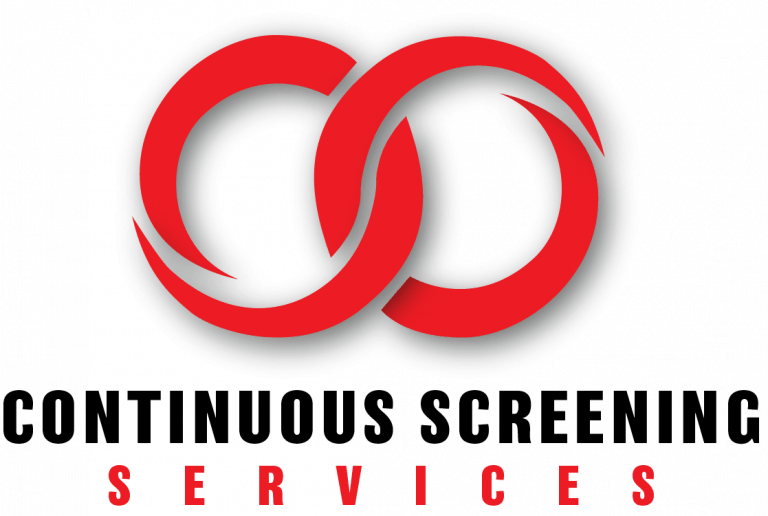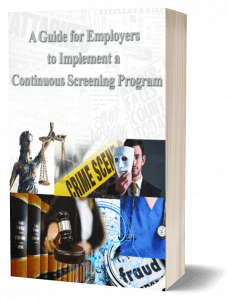
Menu

Continuous Screening is the process of conducting background checks including monitoring of criminal and other important records on current employees on an on-going basis to stay informed about life changes or behaviors that could increase risk for your organization.


A Guide for Human Resources and Hiring Managers
What's inside?
What's inside?

Having current information on employees’ professional licenses, certifications, driving records, criminal convictions, and immigration status helps a firm know whether employees continue to qualify for the position they hold or potential new assignments. Identifying employee misconduct early is an important tool that every business needs to mitigate risk and help reduce the likelihood of negligent lawsuits.
Some of these risk and threats include:

Companies lose an estimated 5 percent of their revenues annually to employee-based fraud, according to the Association of Certified Fraud Examiners.

According to the National Retail Federation, $50 billion annually is lost to theft. Shoplifting accounts for most (36.5%) of those losses of which 33.2 % was attributable to internal theft.

In the United States, the average cost of a data breach increased from $7.91 million in 2018 to $8.19 million in 2019

‘Gigabyte Gangs’ are placing people in jobs that have access to sensitive information for the specific purpose to steal it.
Learn how Continuous Screening helps to provide you with valuable information that positions you to be able to make the best possible decisions about employment actions that could mitigate risk to your organization
Learn the primary reasons why more employers are implementing Continuous Screening Programs so that they can make better decisions about managing employee risks.
Many firms have learned the hard way that sometimes, down the line, this employee who started with a clean record turns in a different direction. Recurring background checks are the only way an employer can know of changes in employee’s status and behaviors that may have a negative impact on the company. Some companies have relied on voluntary reporting, but this has not worked for obvious reasons.
The Bureau of Labor Statistics reports that over two million incidents of workplace violence occur annually:
Managers have a fiduciary responsibility to manage and protect their organization, and not expose their company to liabilities. It is management’s responsibility to ensure that the company implements an effective and ongoing process to identify, define the potential impact, and then initiate the necessary steps to proactively manage these risks.
According to a report on Negligent Hiring employers usually lose (approx. 75% of the time) in negligent hiring cases, with the average settlement of $1 million.
• An example of negligent hiring in an Illinois state appellate court case where the jury awarded more than $54 million in a personal injury lawsuit against a trucking company for the negligent hiring and retention of a trucker that had a “disturbing” driving record and was involved in an accident while on the job.
Reputational risk is a threat or danger to the good name or standing of a business or entity. Reputational risk can occur in the following ways:
In addition to having good governance practices and transparency, companies need to be socially responsible and environmentally conscious to avoid or minimize reputational risk.
